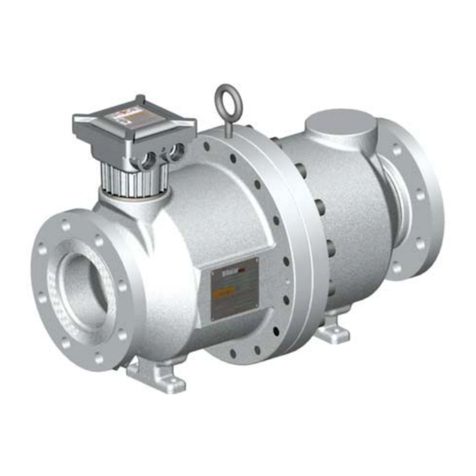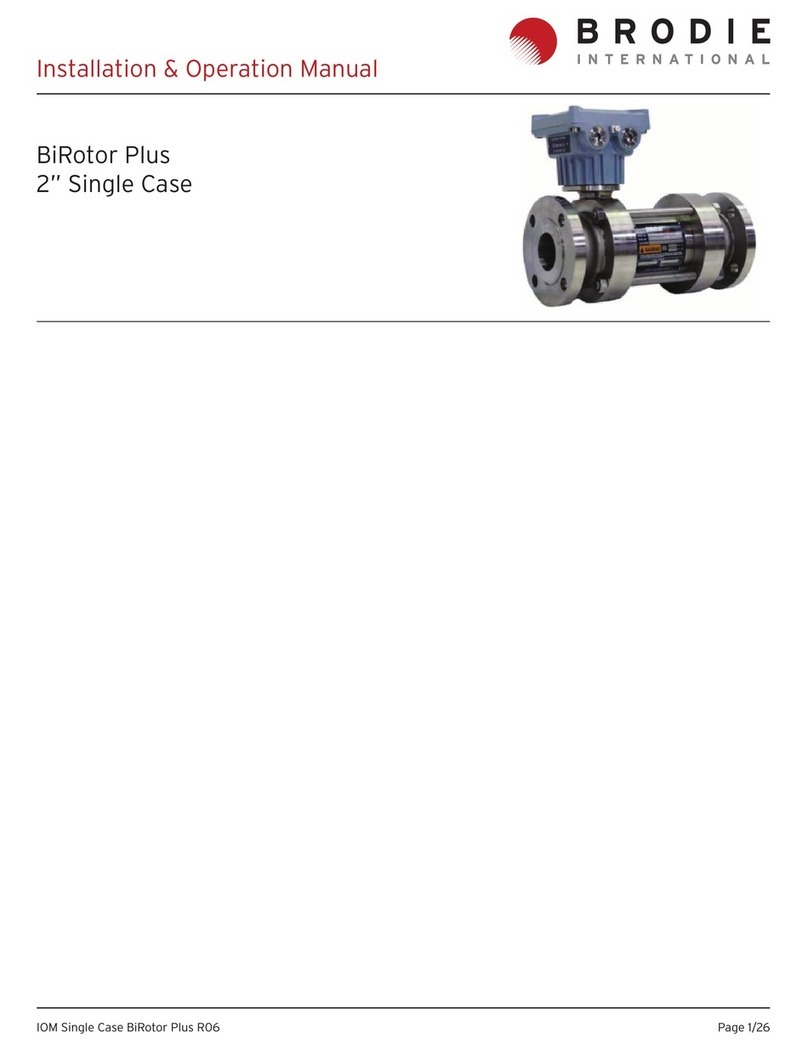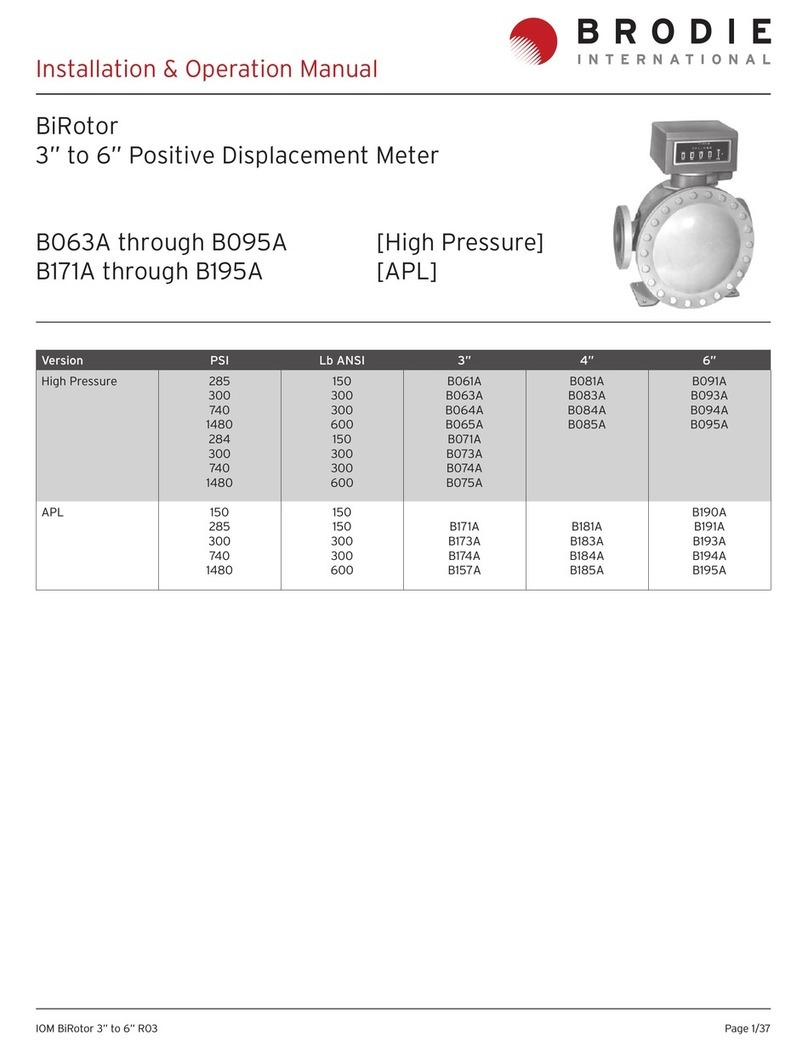
1
2.0 Receipt of Shipment
When the instrument is received, inspect the
outside of the packing case for any damage that
may have occurred during shipment.
Any damage incurred during shipment
is the carrier’s responsibility and is
not part of the factory warranty. If the
packing case is damaged notify the
carrier immediately and follow their claim
procedures.
If the packaging is undamaged locate the envelope
containing the packing list, this will generally be
on the outside of the box. Carefully remove all
the contents from the packaging checking for any
damage, Check the items o against the packing
list for correct parts and quantities. If any items
are incorrect or damage please contact your sales
representative immediately, quoting the sales order
reference number.
If any item is returned to the factory, a returned
material report (RMR) will need to be completed,
The RMR forms can be obtained from the local
sales representative or the Brodie Meter Co., LLC
product service department.
If an instrument has been used with process uid,
then in addition to the RMR a decontamination
statement will also be required..
A decontamination form is included in section 13
of this manual.
Note: When an instrument is being removed
from service is must be thoroughly drained and
any hazardous substances neutralised. Care must
be taken to ensure any substance removed from
the instrument is disposed of in accordance to the
local regulations, Placing the instrument on its inlet
ange will aid drainage.
The process connections should be sealed to
prevent any residual substances leaking from
the meter during shipment. The type of seal will
depend on the mode of transport, the local carrier
should be contacted for details.
Any item should be securely packed, the larger
instruments should be mounted on wooden
pallets or skids for shipment, The exterior of pallet
mounted items should be protected but suitable
means, such as a solid wooden crate.
When packaging the instrument for return to
the factory, make two copies of the RMR and
decontamination statement, place one copy inside
the packaging and one copy on the outside of the
packaging,
Any equipment returned to the factory with out
the correct documentation will be returned to the
sender at their own expense.
Return shipping address:
Brodie International
Product Service Department
19267 Hwy. 301 North
Statesboro, GA 30461
Phone: 001.912.489.0200
Fax: 001.912.489.0294
service@brodieintl.com
3.0 Return Shipment
































